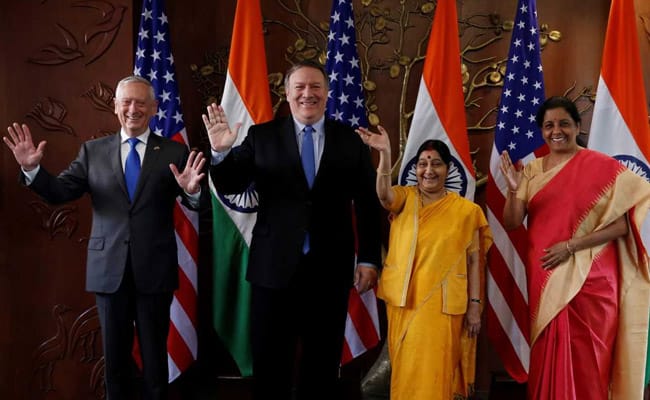Growing Defence cooperation: Evolution
- The parallel tracks of dialogue began in the 1990s.
- The strategic dialogue covering nuclear issues shifted gears following the nuclear tests of 1998 and imposition of sanctions by the U.S.
- The over a dozen rounds of talks between both the countries during 1998-2000 marked the most intense dialogue between the two countries. It helped change perceptions leading to the gradual lifting of sanctions.
- The next phase was the Next Steps in Strategic Partnership steered by the then National Security Advisers, Brajesh Mishra and Condoleezza Rice.
- The momentum received a new impulse, thanks to the warmth between Prime Minister Manmohan Singh and President George W. Bush, eventually leading to the conclusion of the India-U.S. bilateral civil nuclear cooperation agreement in 2008.
- The defence dialogue began in 1995 with the setting up of the Defence Policy Group at the level of the Defence Secretary and his Pentagon counterpart and three Steering Groups to develop exchanges between the Services.
- A decade later, this was formalized and enlarged into the India-U.S. Defence Framework Agreement which was renewed for 10 years in 2015.
- Today, the U.S. is the country with which India undertakes the largest number of military exercises which have gradually evolved in scale and complexity.
- During the Cold War, more than three-fourths of India’s defence equipment was of Soviet origin. This gradually began to change, and in recent years, the U.S. and Israel emerged as major suppliers.
- The Indian Air Force went in for C-130J Hercules and the C-17 Globemaster aircraft, along with Apache attack helicopters and Chinook heavy lift helicopters.
- The Indian Navy acquired a troop carrier ship and the P-8I long-range maritime reconnaissance aircraft. An agreement for 24 multi-role helicopters for the Indian Navy is expected soon.
- The Indian Army went in for the M-777 howitzers and artillery radars. From a total of less than $400 million of defence acquisitions during 1947-2005, the U.S. has signed defence contracts of over $15 billion since.
- During the Obama administration, the US Defence Secretary understood that a defence supply relationship needed to be backed by technology sharing and joint development and came up with the Defence Technology and Trade Initiative (DTII).
- To get around export control licensing and other bureaucratic hurdles, an India Rapid Reaction Cell in the Pentagon was set up.
- In 2016, India was designated as a ‘Major Defence Partner’ country.
- Another step forward in the middle of this year was the inclusion of India in the Strategic Trade Authorisation-1 (STA-1) category, putting it on a par with allies in terms of technology access.
- The U.S. proposed its standard logistics support agreement text in 2003 which was finally concluded in 2016, after it was made into an India-specific text.
- It facilitates logistics supplies during port visits and joint exercises and does not contain any obligations for joint activity or any basing arrangements.
- The India-specific Communications Compatibility and Security Agreement (COMCASA), is likely to be signed.
- With the possibility of acquiring armed Sea Guardian drones, COMCASA was necessary to ensure optimal use.

Obligations and challenges
- Acquiring U.S. high technology comes with its own set of obligations in terms of ensuring its security. These take the form of various undertakings often described as foundational agreements.
- Two difficult issues loom large and the 2+2 offers an opportunity for addressing these.
- The first is the Countering America’s Adversaries Through Sanctions Act (CAATSA) enacted last year which enables the U.S. government to sanction countries that engage in ‘significant transactions’ with Russian military and intelligence entities.
- The proposed purchase of the S-400 missile defence system would attract CAATSA sanctions. A waiver provision has now been introduced to cover India, Indonesia and Vietnam.
- The second relates to U.S. sanctions on Iran after its unilateral withdrawal from the nuclear deal.
- Iranian crude imports have grown significantly in recent years and India also stepped up its involvement in developing Chabahar port.
